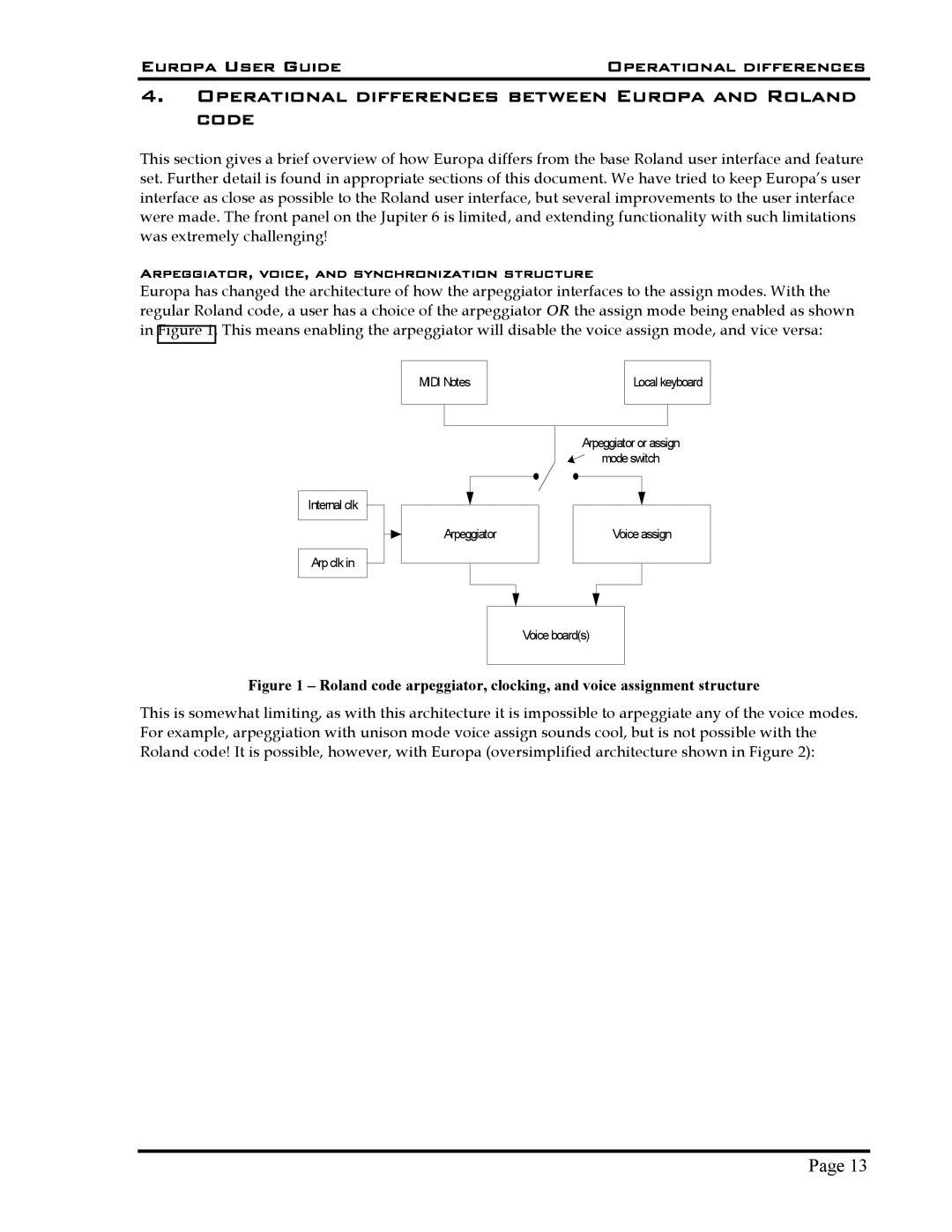
Europa User Guide | Operational differences |
4.Operational differences between Europa and Roland code
This section gives a brief overview of how Europa differs from the base Roland user interface and feature set. Further detail is found in appropriate sections of this document. We have tried to keep Europa’s user interface as close as possible to the Roland user interface, but several improvements to the user interface were made. The front panel on the Jupiter 6 is limited, and extending functionality with such limitations was extremely challenging!
Arpeggiator, voice, and synchronization structure
Europa has changed the architecture of how the arpeggiator interfaces to the assign modes. With the regular Roland code, a user has a choice of the arpeggiator OR the assign mode being enabled as shown in Figure 1. This means enabling the arpeggiator will disable the voice assign mode, and vice versa:
Internal clk
Arp clk in
MIDI Notes |
|
|
|
| Local keyboard | ||||
|
|
|
|
|
|
|
|
|
|
|
|
|
|
|
|
|
|
| |
|
|
|
|
|
| Arpeggiator or assign | |||
|
|
|
|
|
| mode switch | |||
|
|
|
|
|
| ||||
|
|
|
|
|
|
|
|
|
|
|
|
|
|
|
|
|
|
|
|
|
| Arpeggiator |
|
| Voice assign | |||
|
|
| ||||||
|
|
|
|
|
|
|
|
|
|
|
|
|
|
|
|
|
|
|
|
|
|
|
|
|
|
|
|
|
|
|
|
|
|
|
|
|
|
|
|
|
|
|
|
|
Voice board(s)
Figure 1 – Roland code arpeggiator, clocking, and voice assignment structure
This is somewhat limiting, as with this architecture it is impossible to arpeggiate any of the voice modes. For example, arpeggiation with unison mode voice assign sounds cool, but is not possible with the Roland code! It is possible, however, with Europa (oversimplified architecture shown in Figure 2):
Page 13
